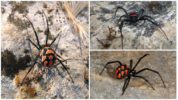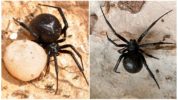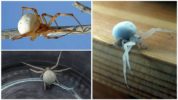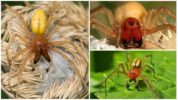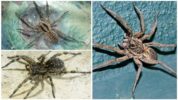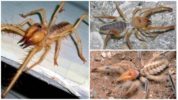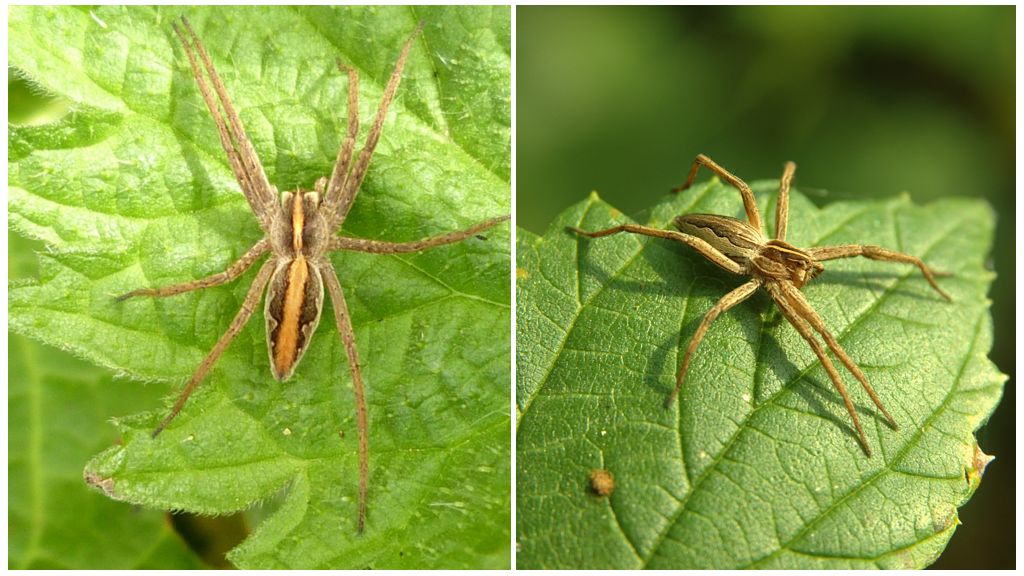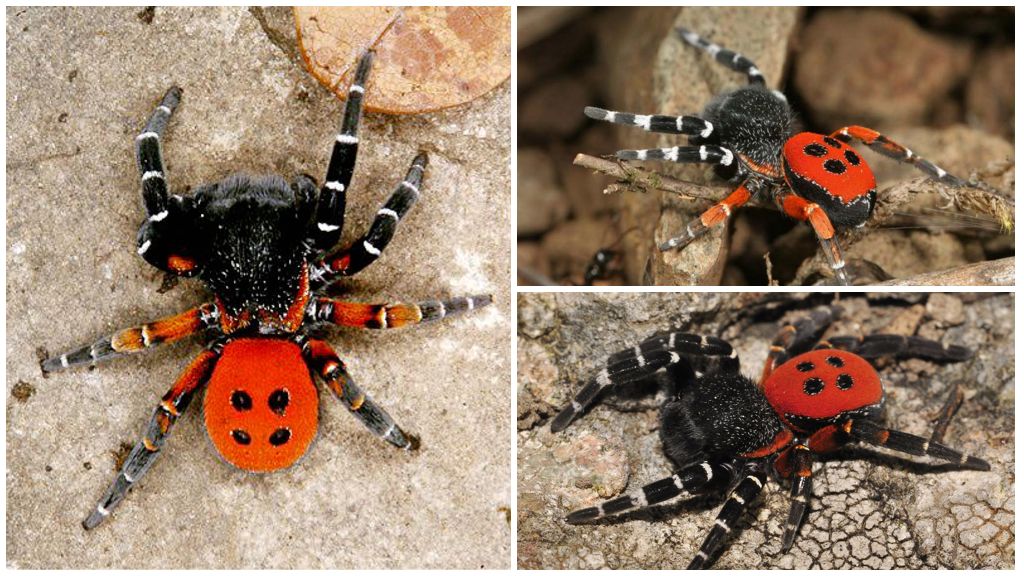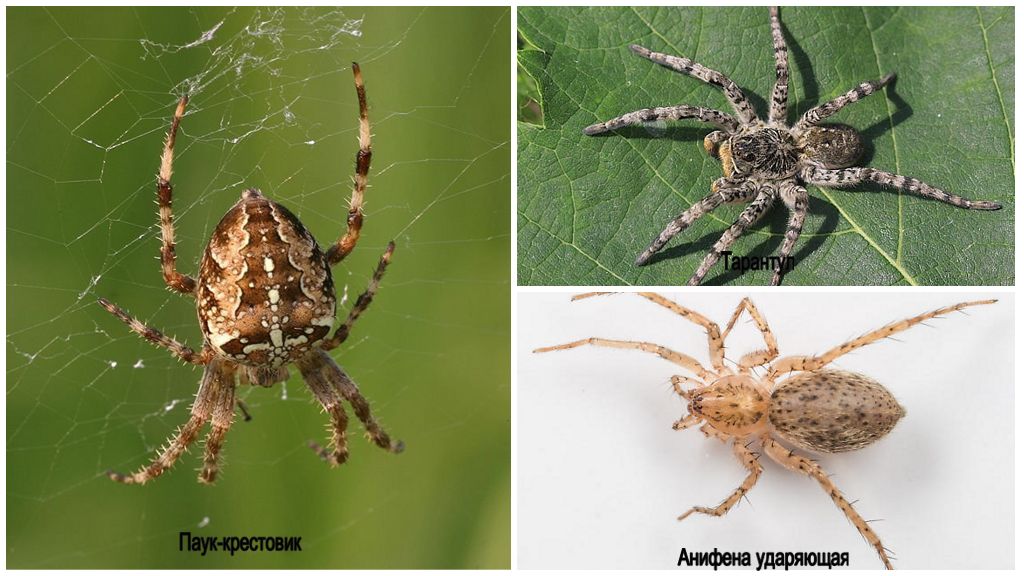- Karakurt
- Karakurt Dahl
- White karakurt
- Heyrakantium yellow
- Tarantula
- Central Asian Salpuga
The development of mountain tourism in Kazakhstan led to the fact that people who previously knew nothing about this country began to come there. The sites of travel agencies will tell about the delights and beauties of the Kazakhstan mountains. But beauty is often accompanied by dangers. The worst ones are those that cannot be flagged or foreseen. Such unforeseen dangers include Kazakhstan's snakes and spiders, because they are living creatures. They can move and be in an unexpected place. Including, in a tourist tent.
Snakes try to avoid humans, most species of spiders does not leave its nests (but no one knows where the next arthropod decides to settle), but arachnids like to travel. The latter include salpugs and scorpions. All poisonous spiders and arachnids in Kazakhstan have a fairly characteristic appearance. Photos and descriptions are usually enough to recognize a danger in a “personal” meeting.
There are few toxic species of spiders in Kazakhstan compared to a variety of dangerous spiders in Australia. But in it almost all the spiders of Europe, representing danger, "gathered":
- Karakurt thirteen-point;
- Karakurt Dahl;
- white karakurt;
- heiracantium yellow;
- tarantula.
On a note!
In addition to these species, the country lives harmless horse spiders, crossesfunnel home spiders and many others. Invertebrates in Kazakhstan are poorly studied and the exact number of spiders is unknown.
Climate nuances and spider habitats
Kazakhstan is located in the temperate zone, but due to the terrain features, the climate in its different parts ranges from subtropical, similar to Crimean, to cold, similar to northern Yakutia. The distribution of Kazakhstan spiders depends on the level of winter temperature.
Karakurt
It lives in the desert zone, which occupies almost the entire southern Kazakhstan and part of Central. An animal of medium size with strong sexual demorphism. The dimensions of the male are about 5 mm and this animal is completely safe for humans.
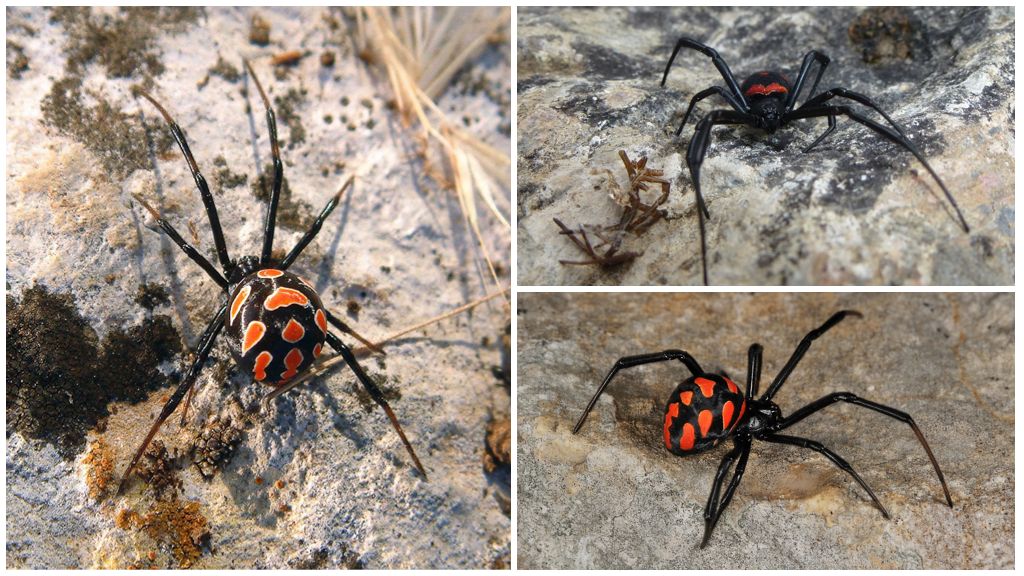
The female is a serious adversary not only for her prey. The main Kazakh cattle: camels and horses are very sensitive to the poison of this arthropod 2 cm in size.
Interesting!
Cows and sheep are resistant to poison karakurt.
Karakurt species Latrodectus tredecimguttatus - a black spider with red or whitish spots on the abdomen. Due to the number of spots, this species is called “thirteen-point”. Red spots can be outlined by a white stripe and then look convex. The abdomen is spherical, significantly larger than the cephalothorax. There is no bristle on the animal, so it looks shiny.
A bite of a karakurt leads to severe painful spasms throughout the body. All signs of severe general poisoning are also present. In the later stages, arousal gives way to depression. Sometimes the case ends with the death of the victim. To counter the poison, anticaracourt serum is used.
Karakurt Dahl
Latin name Latrodectus dahli. The difference from the previous type of karakurt is a pure black color without any inclusions. Otherwise, both species of these spiders are identical.
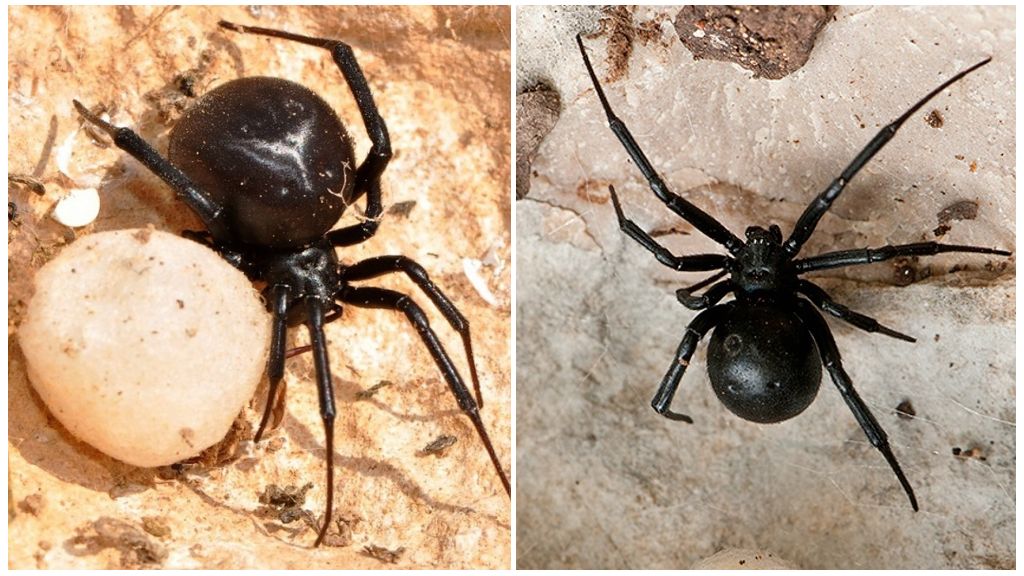
They build nests at the base of the shrubs, braiding them in randomly arranged threads.In the desert, they prefer to hide in the shade of animal holes. Sometimes they even coexist peacefully with the true owner of the shelter.
On a note!
Thirteen-dot and karakurt Dahl can interbreed, giving intermediate offspring. This makes it difficult for arachnologists to identify a specific individual, but for an ordinary tourist it does not matter. It is enough to remember that spiders with red spots and pure black are karakurt.
White karakurt
The only "blond" among the poisonous spiders in Kazakhstan, although its range extends throughout Central Asia and the Middle East, capturing Russia and North Africa. It is more adapted to cold weather than black karakurt. He selects habitats in the steppe and desert zones, so he can be found not only next to his black counterparts, but also in Western Kazakhstan.

The habits are similar to other spiders of the genus black widows. Appearance differs from karakurt Dahl only in color. White karakurt not just got this name. His abdomen is completely white. The cephalothorax is also devoid of pigment and, due to the characteristics of chitinous integuments, has a light brown color. Due to the lack of pigment, the cephalothorax appears translucent.
On a note!
Since this is the least toxic species, it is not dangerous for an adult. But the action of the poison is similar to the action of toxins of black karakurt. With a weakened body, even white poison can lead to death. Such cases were recorded in the elderly and children.
Heyrakantium yellow
The second name of the spider is yellow sack. The adjective "yellow" heyrakantium received because of its dirty yellow color. Thanks to this color, it is invisible against the background of dried grass in the steppe. This spider prefers arid regions and is distributed from Central Asia to Central Europe. Today, it has begun to penetrate the more northern and colder areas. The range is expanding due to climate change, as the spider prefers relatively hot regions. In Kazakhstan, it can be found everywhere, except for East Kazakhstan, where there are very severe winters.

On a note!
Heiracantium weaves a web on the steppe grasses. The body length of the spider is 1.5 cm. Its prey is agricultural pests with hard chitinous shells. Because of this, spider chelicera are able to penetrate hard integuments, and human skin is not an obstacle for them.
By the effectiveness of poison and pain from a bite, this yellow spider is equal to the wasp. Serious consequences spider bite does not cause, although pain and swelling persist for several hours.
Tarantula
The main poisonous spiders of East Kazakhstan - tarantulas. Wolf spiders, which include tarantulas, like their mammals "namesakes" adapted to life in any conditions. Even the winters of East Kazakhstan with their -50 ° C tarantulas are not scared. More dangerous for humans spiders prefer warm places.

The most numerous species, not only in the eastern part, but throughout the country - south russian tarantula. Due to the very favorable living conditions in the summer in Kazakhstan, this species grows 2 times larger than usual and reaches 5 cm. The color of these spiders can be greenish-gray, gray or yellow-gray.
On a note!
Tarantulas are real earthen spiders that build holes for themselves on their own. They dig deep vertical "wells" in which they await prey. The probability of accidentally disturbing the tarantula, unlike karakurt, is very small. But tarantulas hunt at night and can crawl into a tent in search of prey.
They do not like to settle only in the forest. They are found in forest-steppe, steppe, semi-desert and desert areas. That is, throughout Kazakhstan.
Central Asian Salpuga
Karakurt is not the only danger in Kazakhstan. In addition to spiders, there are salpugs (phalanxes). These are arachnids belonging to the phalanx order. Now representatives of the squad are called saltpugs, so as not to be confused with the phalanx consonant squad Phalangida - arachnids better known as hayers (mittens).
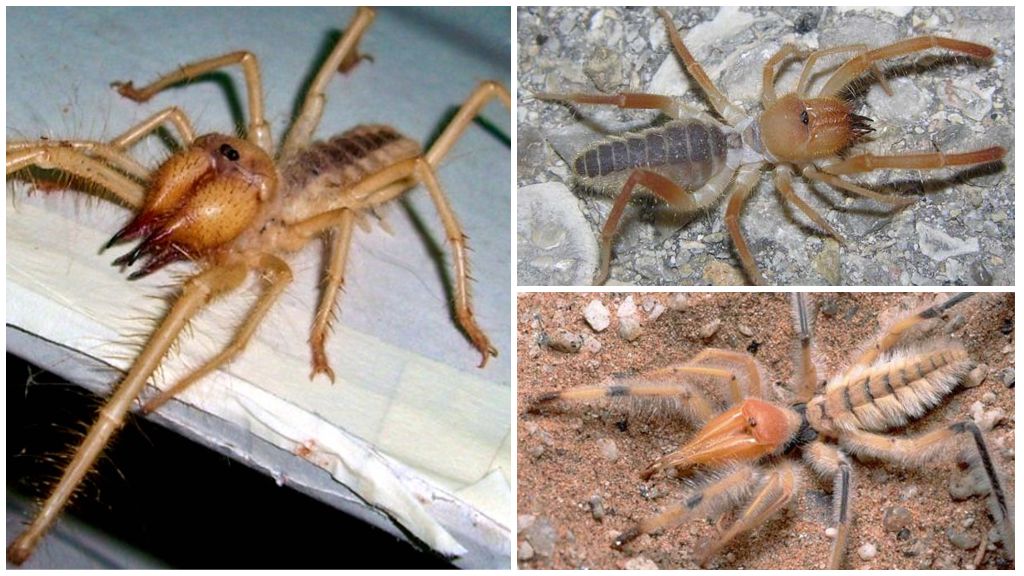
Interesting!
Although from a biological point of view, the salpuga does not belong to real spiders, but the name of the phalanx - spider in Kazakhstan has been used since ancient times. Often in Central Asia it is called a camel spider.
The Central Asian saltpug grows up to 7 cm. Camouflage color: gray-yellow. This is a night hunter who is able to crawl into a house at night. From a spider, a salpug differs not only in the absence of arachnoid and poisonous glands. She has 2 pairs of stings with teeth instead of one pair of chelicera and 5 pairs of walking legs versus 8 spider legs.
Small saltpugs are not dangerous to humans, as they are not able to bite through the skin. Large ones can infect with sepsis during a bite, as decaying pieces of the flesh of the previous victim remain on the stings.
